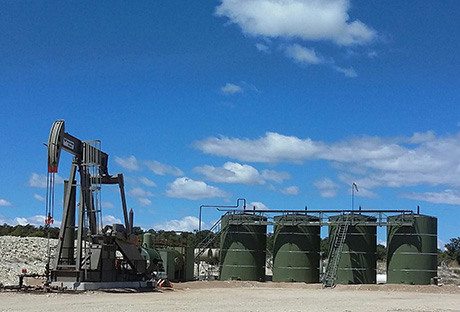Utah is home to a wealth of natural resources, particularly in the oil and gas sector. Responsible production of these resources is essential to preserving our state’s beautiful natural landscapes and to prioritizing the public health of our citizens. Oil and gas operators will find web resources here to help them abide by Division of Air Quality regulations. Tools for completing oil and gas emissions inventory workbooks, registering facilities, and other supplementary information can be found below. Oil and gas emissions inventory data can be accessed on the Statewide Emissions Inventories page.
Jump to …
- 2023 Inventory
- 2020 Inventory
- 2017 Inventory
- 2014 Inventory (Uinta Basin)
- Oil & Gas Emissions Inventories
- Contact
Related Project Lists
2023 Statewide Oil & Gas Emissions Inventory
- Pneumatic Controller Emission Factor Update (2024)
- 2023 Utah Air Agencies Oil & Gas Emissions Inventory Workbook Instructions
- Emissions inventory workbook download and upload link
2020 Statewide Oil & Gas Emissions Inventory
- 2020 Utah Air Agencies Oil and Gas Emissions Inventory Workbook Instructions
- Centralized Air Emissions Reporting System (CAERS) Info
- OGEI 2020 CAERS Webinar, February 18, 2021
2017 Statewide Oil & Gas Emissions Inventory
- 2017 Oil & Gas Emissions Inventory Workbook
- 2017 Oil & Gas Emissions Inventory Workbook Instructions
- Upload System (submission closed)
- Upload Instructions
- Webinar Instructions
- Recorded Webinar
- Webinar #1 Q & A
- 2017 Uinta Basin Oil and Gas Emission Summary (Subject to Change)
- Produced Water Disposal Facility Emission Factors and their Impact on the 2017 Oil and Gas Emissions Inventory
- Uinta Basin VOC Composition Study Impacts on the 2017 Oil and Gas Emissions Inventory
- Utah Petroleum Association Review of Uinta Basin VOC Composition Study
- UDAQ Response to UPA Review of the Uinta Basin VOC Composition Study
- Gap Fill Well Liquid Unloading
- Gap Fill Pigging Blowdowns
- Gap Fill Tank Emissions Not Making to Combustor
2014 Air Agencies Oil and Gas Emissions Inventory: Uinta Basin
- Final 2014 O&G Emissions Table
- 2014 Oil and Gas Emission Inventory Presentation
- Pneumatic Controller Emission Factor Modification
- Ponds/Landfarms/Landfills Gap Filling
- WRAP Additional Equipment Gap Filling
For almost a decade the 2006 Western Regional Air Partnership (WRAP) Phase III oil and gas emissions inventories were relied on for the Uinta Basin (Basin), the main oil and gas producing region in Utah. Although these inventories were projected forward using up-to-date annual production and drilling activity data from the region, the inventories still lacked the ability to capture the technological advancements that occurred over the period.
In 2013 Utah Division of Air Quality (UDAQ) started working to develop an up-to-date and improved oil and gas emissions inventory for the Basin. This process involved the cooperation of various stakeholders, including operators from the Uinta Basin, Western Energy Alliance (WEA), Environmental Protection Agency (EPA), Bureau of Land Management (BLM), and the Ute Tribe.

In 2015, an emissions inventory workbook and request for completion was sent to each operator in the Uinta Basin active in 2014. In 2016 the data was compiled into a 2014 Uinta Basin oil and gas emissions inventory database.
In addition to the collected inventory UDAQ has worked to determine and begin collecting supplemental data needed in addition to the collected inventory to create a truly comprehensive 2014 inventory, including additional equipment categories not addressed through the workbook request.
Oil & Gas Emissions Inventories
Oil and gas inventories are based on data submitted by various oil & gas sources throughout the state. The inventory is primarily comprised of “… emissions at oil & gas facilities with Standard Industrial Classification codes in the major group 13 that have uncontrolled actual emissions greater than one ton per year for any single pollutant including: PM10, PM2.5, NOx, SOx, CO, or VOC. These sources include, but are not limited to, industries involved in oil and natural gas exploration, production, and transmission operations; well production facilities; natural gas compressor stations; and natural gas processing plants and commercial oil and gas disposal wells, ponds and sites.” (R307-150)
Contact
Contact us ([email protected]) for additional information about the Oil and Gas Emissions Inventory.
